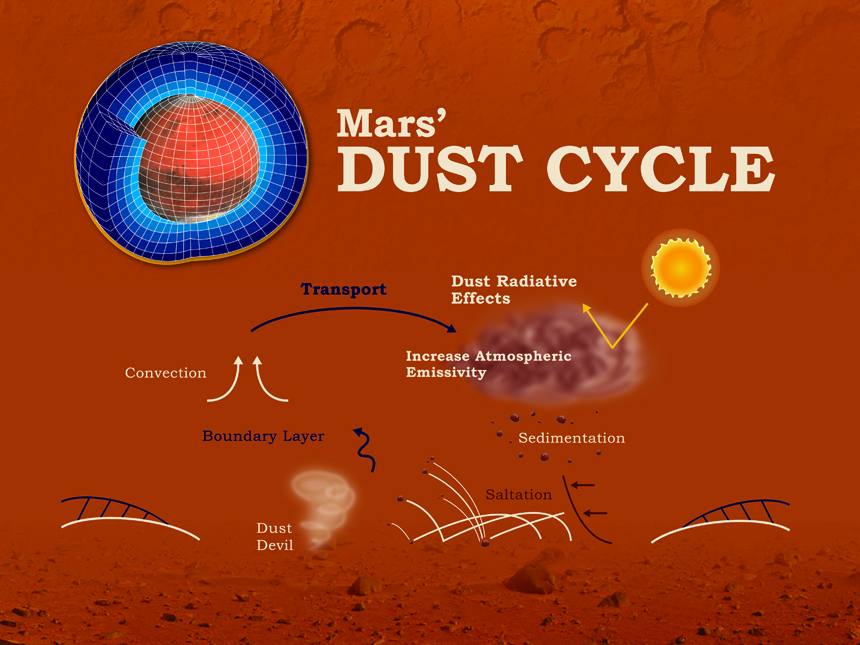Dust is lifted from Mars’ surface to the atmosphere through processes associated with the exchange of momentum and heat between the atmosphere and the surface. Once dust is lifted from the surface, it is mixed vertically in the turbulent planetary boundary layer and transported horizontally by large-scale winds before falling back to the surface by gravitational sedimentation.
Airborne dust is radiatively active and significantly impacts the atmospheric thermal structure. By warming or cooling the atmosphere locally, airborne dust triggers changes in the mass distribution of the atmosphere, resulting in modified pressure gradients, winds, and atmospheric dynamics. These, in turn, affect all dust-related processes including lifting, transport by advection and mixing, and sedimentation. Local dust storms can form and can turn into regional or even global planet-encircling dust storms, moving dust between locations on a range of timescales.
Dust particles interact with the water cycle by acting as ice nuclei for heterogeneously nucleated water ice clouds. The combined dust and water ice particles affect the thermal and dynamical state of the atmosphere which then alters the dust cycle. These complex interactions and feedbacks are key elements of the dust cycle and the Martian climate.
We use the NASA Ames Mars GCM to address several questions relating to the dust cycle and its effects on the climate of Mars. Click the links below to learn about our current dust-related projects.



























